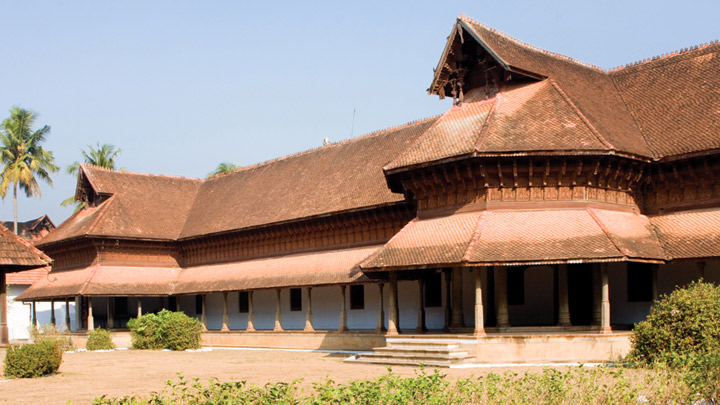Kuthira Malika, also known as the Puthen Malika Palace, is an architectural masterpiece located in Thiruvananthapuram, the capital city of Kerala, India. This historic palace, with its distinctive design and rich cultural heritage, stands as a testament to the artistic and architectural prowess of the region. In this article, we will explore the history, significance, and architectural marvel that is Kuthira Malika.
Historical Background
Kuthira Malika was built during the 19th century by Maharaja Swathi Thirunal Rama Varma, who was not only the king of Travancore but also a renowned poet, musician, and scholar. The palace served as the king’s royal residence and a center for cultural and artistic activities. Its name, “Kuthira Malika,” translates to “Mansion of Horses,” which is attributed to the 122 wooden horses that adorn the outer frieze of the palace.
Architectural Marvel
Kuthira Malika is celebrated for its architectural excellence, blending elements of Kerala’s traditional architecture with European influences. The palace’s architectural style is primarily known as the Travancore style. Some key features of the palace include:
- Wooden Architecture: The palace is constructed primarily from wood, which is intricately carved with exquisite designs. The wooden carvings are a testament to the craftsmanship of Kerala’s artisans and reflect themes from mythology and folklore.
- Ornate Cornices: Elaborate wooden cornices run along the eaves of the palace, adorned with delicate and intricate carvings that showcase the skill and artistry of the craftsmen.
- Mahogany Ceilings: The ceilings of the palace are made from polished mahogany, with each panel featuring a different design. These ceilings are renowned for their aesthetic appeal and craftsmanship.
- Artistic Columns: The palace is supported by intricately carved wooden columns that are a blend of traditional Kerala architecture and European styles.
- Courtyard: The palace features a beautiful courtyard in its center, with a traditional nalukettu (four-sided layout) design. The courtyard is adorned with lush greenery and a tranquil atmosphere.
Significance and Cultural Heritage
Kuthira Malika holds immense historical and cultural significance in Kerala. It was not only the residence of Maharaja Swathi Thirunal but also a hub of cultural activities during his reign. The palace served as a platform for promoting traditional art forms, music, and dance, making it an essential part of Kerala’s artistic legacy.
Museum and Heritage Center
Today, Kuthira Malika has been transformed into a museum and heritage center, allowing visitors to explore its rich history and architectural splendor. The museum houses a fascinating collection of artifacts, including:
- Royal Artefacts: The museum displays personal belongings of Maharaja Swathi Thirunal, such as musical instruments, manuscripts, and memorabilia.
- Art and Sculptures: Visitors can admire a range of artworks, sculptures, and paintings that provide insights into the region’s cultural heritage.
- Historical Exhibits: The museum also exhibits historical documents, photographs, and relics that shed light on the history of Travancore.
- Ethnographic Displays: There are exhibits showcasing the rich traditions and customs of Kerala, making it an educational experience for visitors.
Visitor Information
Kuthira Malika is open to visitors and is a popular tourist attraction in Thiruvananthapuram. It is well-maintained, and guided tours are available to provide insights into the palace’s history and significance.
Conclusion
Kuthira Malika, the Mansion of Horses, stands as a testimony to Kerala’s rich cultural heritage and architectural brilliance. This historic palace, with its exquisite woodwork and artistic grandeur, offers visitors a glimpse into the opulent lifestyle and artistic patronage of the kings of Travancore. A visit to Kuthira Malika is not just a journey through history but also a celebration of Kerala’s artistic legacy.

